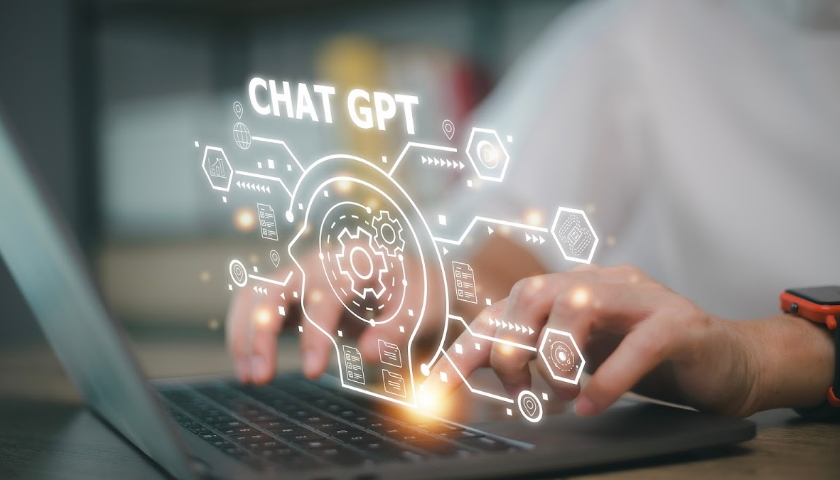Every now and again, an innovation will turn up and explode into the mainstream seemingly almost overnight. This time, that innovation is an AI-powered conversational interface, named ChatGPT. Released in the end of November 2022, the intelligent chatbot reached 100 million users this January, making it one of the fastest-growing AI services ever. In no time, Microsoft invested USD10 billion to integrate this tech into its Office software and Bing search engine. Just recently, Google introduced its own chatbot called Bard, while Opera is enlisting ChatGPT for its browser to summarize articles and webpages.
As ChatGPT continues to take the world by storm and capture all corners of social media, here’s what you need to know so you don’t miss out on the conversation.
What is ChatGPT?
ChatGPT is short for chat-based Generative Pre-trained Transformer. It relies on large language models trained on extensive datasets taken from a source to give itself plausible sounding responses. It employs machine learning algorithms and natural language processing to analyze and understand written and spoken languages to generate responses.
Who built ChatGPT?
The AI research and development company OpenAI created ChatGPT. Microsoft is a partner and investor, pouring USD1 billion in 2019 into OpenAI to develop smart solutions capable of tackling more complex tasks. OpenAI is also famous for developing DALL·E, a deep-learning model that generates images based on user input.
Why is ChatGPT important?
If you watched any Iron Man films, you may be familiar with Jarvis who served as Tony Stark’s trusty AI helper. Now, think of ChatGPT as the early prototype. With deeper exploration and development, ChatGPT could potentially transform the way humans and machines work together. In the future, ChatGPT can enrich both work and play by gathering, summarizing and distilling information in a quick and precise manner.
How does ChatGPT works?
ChatGTP requires the correct use of prompts, which are simply words, phrases, questions and keywords employed to generate results. The better a prompt is, the easier it is to achieve your desired result. One of the best ways to further improve your ChatGPT experience is to ask follow-up questions so it refines its responses. Additional context or information also helps ChatGPT provide accurate and relevant responses.
What can ChatGPT do?
Answer your queries. ChatGPT’s most used feature is providing users with information. It answers questions with a high degree of accuracy in almost any topic such as science, politics, literature, history and technology, as well as provides guidance for a wide range of tasks. For instance, you can ask ChatGPT how to prepare a certain type of meal or for feedback on a new business venture you’d been mulling over that is related to your unique set of skills and interests.
Assist in creative endeavors. Instead of generating content, ChatGPT aids creatives in creating content, copywriting and ideation. Its ability to accelerate research and summarize trends allows the human counterpart to quickly develop new marketing campaigns and come up with messages that resonate with the audiences.
Programming and code generation. By explaining programming concepts to ChatGPT, it can generate customizable code for developers to refine. In addition, ChatGPT can be used for debugging purposes to identify common errors and bugs in written code.
Data analysis and reporting. ChatGPT can analyze large amounts of data to provide insights for better data-driven decisions. Furthermore, it has the function to visualize these insights by generating reports, presentations and charts to ensure that the right information is clearly highlighted.
What are ChatGPT limitations?
Quality of response. Simply peppering ChatGPT with questions will not always give you a good response. It requires high-quality prompts that are structured with the intent that there is an answer for it. How do you ensure that you get the most accurate answer? A lot of refinements, rewriting and rewording.
Offline and outdated. The AI powering this chatbot is not connected to the Internet so it doesn’t have the ability to scour the web for answers. Its pre-trained data is limited to 2021. Any events or news after that will not ring ChatGPT’s bell, which is why it couldn’t answer who won the 2022 FIFA World Cup.
No validation. Right now, ChatGPT works entirely on trust. However, it doesn’t give users a reason to trust its responses, simply because there is no validation. Established search engines provide attribution as users can easily view the source page for context and clarification.
Artificial hallucination. ChatGPT’s human-like language is its greatest strength and most glaring flaw. Why? Because it can give users plausible-sounding answers backed with plausible-looking citations. This sinister combination has the potential to spread misinformation and cause unintended consequences, especially to those who are not experts in their field. The answers may look correct even when they are utterly and totally wrong, thus, giving rise to the term artificial hallucination.
What now?
The virality of ChatGPT will continue to attract new investment and interest for AI chatbots, in addition to accelerating its development. The future is truly exciting as a new wave of change is on its way. Like Thanos, ChatGPT is inevitable but keep in mind that there’s a long way still before everyone gets their own Jarvis.
Others have concerns. Will ChatGPT replace traditional search engines? Will it take over more jobs in the creative space? The answer to both is no. What’s possible is a hybrid future: one where search engines and chatbots amalgamate to enrich search experiences, and one where the tool is only as good as the person wielding it. A great way to look at it is that you can now humbly brag to others that you knew what AI chatbot was when it was still in its nascent stage. That is, if our AI overlords permit such things in the future.

